
ROUTLEDGE LIBRARY EDITIONS: KEATS
Volume 1
THE STYLISTIC DEVELOPMENT OF KEATS
THE STYLISTIC DEVELOPMENT OF KEATS
WALTER JACKSON BATE

First published in 1945
Reissued 1958
This edition published in 2014
by Routledge
2 Park Square, Milton Park, Abingdon, Oxon, OX14 4RN
and by Routledge
711 Third Avenue, New York, NY 10017
Routledge is an imprint of the Taylor & Francis Group, an informa business
1945 Walter Jackson Bate
All rights reserved. No part of this book may be reprinted or reproduced or utilised in any form or by any electronic, mechanical, or other means, now known or hereafter invented, including photocopying and recording, or in any information storage or retrieval system, without permission in writing from the publishers.
Trademark notice: Product or corporate names may be trademarks or registered trademarks, and are used only for identification and explanation without intent to infringe.
British Library Cataloguing in Publication Data
A catalogue record for this book is available from the British Library
ISBN: 978-1-138-01608-8 (Set)
ISBN: 978-1-138-77832-0 (Volume 1)
Publishers Note
The publisher has gone to great lengths to ensure the quality of this book but points out that some imperfections from the original may be apparent.
Disclaimer
The publisher has made every effort to trace copyright holders and would welcome correspondence from those they have been unable to trace.
The
STYLISTIC DEVELOPMENT
of KEATS
BY
WALTER JACKSON BATE
Member of the Society of Fellows, Harvard University

LONDON
ROUTLEDGE & KEGAN PAUL LTD
BROADWAY HOUSE: 68-74 CARTER LANE, E.C.4
First Published in 1945
Re-issued 1958 by
Routledge & Kegan Paul Ltd.
Broadway House, 68-74 Carter Lane
London, E.C.4
Printed in U.S.A.
To
DOUGLAS BUSH
INTRODUCTORY NOTE
THIS STUDY is twofold in its purpose: it seeks to give a precise description of the unfolding and development of a great poets stylistic craftsmanship, and it also attempts to ally this technical progression with the changing bents of mind which gave it rise and direction.
In accordance with these aims, the metrical sections of this analysis are written with the hope of throwing additional light upon Keatss general stylistic development rather than of making any specific contribution to the science of English metrics per se. Since the time when the followers of Joshua Steeles Prosodia Rationalis (1779)Thelwall and Odell, Richard Roe and James Chapmanestablished the bar-and-rest school of English metrists, prosodists have occasionally abandoned traditional modes of scansion and employed their own means of dividing the line. It is certainly true that recent attempts of this sort are hardly to be classed, for example, with Steeles division of the first line of Paradise Lost into
Of / mans / first diso / bedience / and the / fruit;
and there is ground for the contention that the metrical subtleties which ordinarily elude orthodox designation can be more precisely expressed, if not so easily grasped, by a language constructed for the occasion. But the aims of this study, and the belief that criticism has little justification unless it is cast in a form which can readily communicate, have necessitated a more traditional approach, and also, I may add, a certain amount of general repetition. I have assumed the existence of metrical feet; patterns of versification have been considered almost wholly on that assumption, with the belief that, where conscious, they were treated in this way by Keats; and an attempt has been made to employ, wherever possible, the most customary terminology. I should add that, in accordance with the practice of some of the older prosodists, I have simply used the sign  to indicate a syllable which is not completely unstressed but which does not deserve more than an intermediate accent at most.
to indicate a syllable which is not completely unstressed but which does not deserve more than an intermediate accent at most.
Some statement should also be made about the statistical material which is occasionally presented throughout this study. Except when there is a specific statement to the contrary, the present writer is responsible for it. Any such material is always open to the charge that some instances counted under a certain heading are disputable; that the compilation of frequency, in other words, is somewhat dependent on the compilers judgment. A true pyrrhic foot, for example, may be very rare indeed; for one of the syllables in a so-called pyrrhic may almost always be pronounced with slightly more stress than the other. Again, what strictly constitutes hovering accent or a spondaic foot is often a matter of caprice. But although the compilation of another analyst might differ somewhat, it is improbable that the difference would be sufficiently marked to alter the conclusions. It is possible that the significance of some of the statistical material could be questioned on another, if slighter, ground. Statistics are, of course, a complicated matter, and it is entirely possible that simple percentages indicating frequency of occurrence are not completely conclusive. Without pleading how rarely one may find a statistician who is also interested in English verse, I would strongly emphasize that this material is included simply for what it is worth and left to the judgment of the reader. Many students have often wished, in reading metrical or even stylistic works, that they know more exactly how common a particular phenomenon was. With the belief that statistical notes are at least more helpful than general statements, such notes have been included for readers who may have this desire.
A final word of caution seems advisable. A conscious purpose, in a general form, may have been undeniably present in the mind of a writer studied; but stylistic and especially prosodic studies must appear, by their very nature, to attribute to him a more analytically conscious intention in specific instances than there is warrant for assuming. An attempt has been made in this book to guard against too flagrant an appearance of this sort; but it may be re-emphasized here that many of the phenomena analyzed are offered less as specific ends towards which Keats was striving than as instances symptomatic of a more general purpose.
Throughout this study, continual reference has been made to the large body of earlier English prosodic writing, particularly that produced immediately before and during Keatss lifetime. It is believed that such reference is fruitful; for this sort of writing is often of considerable assistance in attempting to place the precise stylistic nature of the verse of a specific period. That later stylistic studies have not received anything like proportionate reference does not, therefore, imply that I am not under obligation to them. Like anyone who deals with versification, I owe a general debt to the pioneer works of Schipper, Sidney Lanier, Bridges, Mayor, Omond, and Saintsbury; and to the more recent writings of Messrs. Robert Hillyer, Pallister Barkas, P. F. Baum, J. E. Bernard, Egerton Smith, John Pope, H. C. Wyld, and Sir George Young. Among works closer to the subject of this analysis I have an equal obligation, despite the dissimilarity of my approach, to Wolffs
Next page

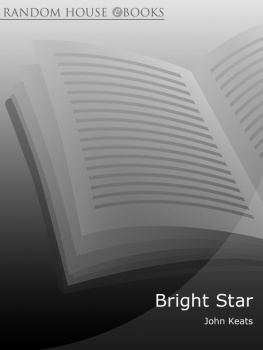


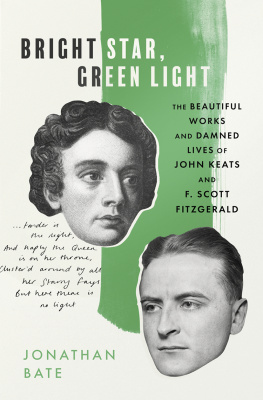
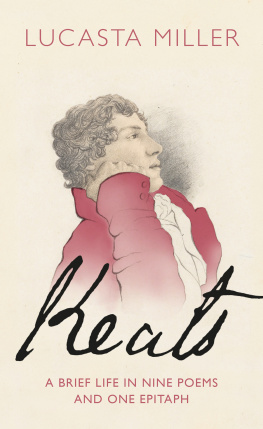
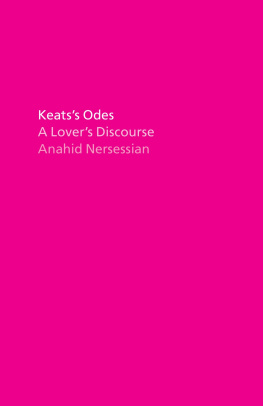
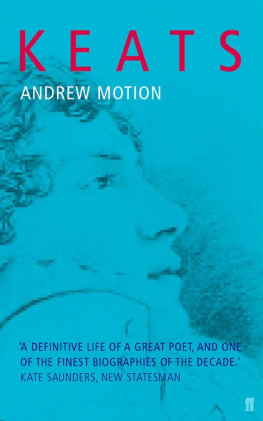
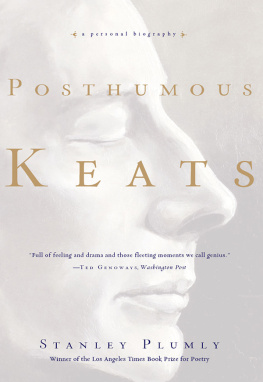

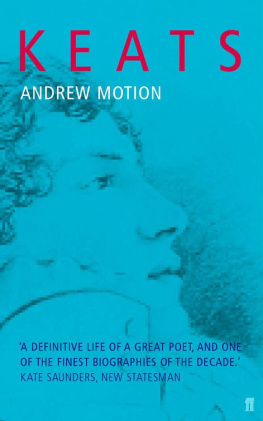




 to indicate a syllable which is not completely unstressed but which does not deserve more than an intermediate accent at most.
to indicate a syllable which is not completely unstressed but which does not deserve more than an intermediate accent at most.